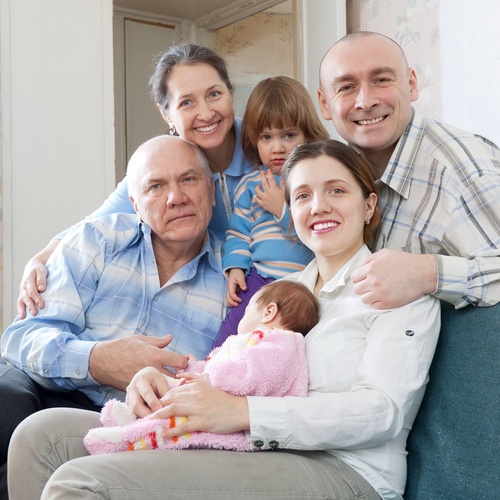
Multigenerational living has been on the rise in America in the last few years. According to the Pew Research Center, analysis of the most recent census data shows that 57 million Americans – over 18 percent of the population – live in households with multiple generations of family. Many factors have spurred this development including the increasing longevity of Americans, students moving back home to economize and pay off school loans and the lingering effects of the recession.
If you’re one of the families considering consolidating their living situation and bringing several generations together under one roof, here are some suggestions and things to think about to help you make the most of the experience.
Privacy
When more than one adult generation is sharing a living space, privacy becomes a critical issue. Ideally, the adults in the home should have their own master suites with separate entrances so they have the option of privacy. Larger shared living spaces, such as living and family rooms, should have different areas designated for the generations, such as a spot just for toys that is away from where an elderly adult might trip and fall. Also having spaces for each generation to relax and entertain can be important, especially if you have vast differences of taste in how you like to unwind after a long day. And while having a totally separate kitchen could be a nice bonus, a simple kitchenette can give an elderly parent a place to prepare a quick meal or drink without having to use a shared space.
Flexibility
One of the hallmarks of the multigenerational family is the need for flexibility, as living situations will continue to change as family members age. Rooms should be kept neutral to allow for them to be utilized in different ways as a family’s needs change. For example, if a child leaves for college, her bedroom could become an office or guest bedroom.
Accessibility
Open access for all members of the family living together is another important consideration. Do any members of the family have accessibility concerns, like using a wheelchair or a walker? Will stairs be an issue? Are the doors and hallways wide enough to accommodate everyone? Can bathrooms be outfitted with safety precautions like handrails in the shower? Before getting an elderly member of the family moved into a new home, be sure it’s been properly prepared for their arrival.
Bills
With so many adults living under the same roof, there will be some question as to how to divide up bills and other living costs such as groceries and cable. Every family will have different ways to deal with this, but the important thing is to make those arrangements beforehand so that everyone knows what they are responsible for and feels comfortable. It will go a long way towards alleviating any potential conflict in the future.
Communication
In the end, what is going to make the biggest impact on your quality of life is maintaining ongoing communication between all the generations living together. Schedule regular family meetings – preferably in a neutral location outside the house – so that everyone can check in about what is and isn’t working.
Compliments of Virtual Results